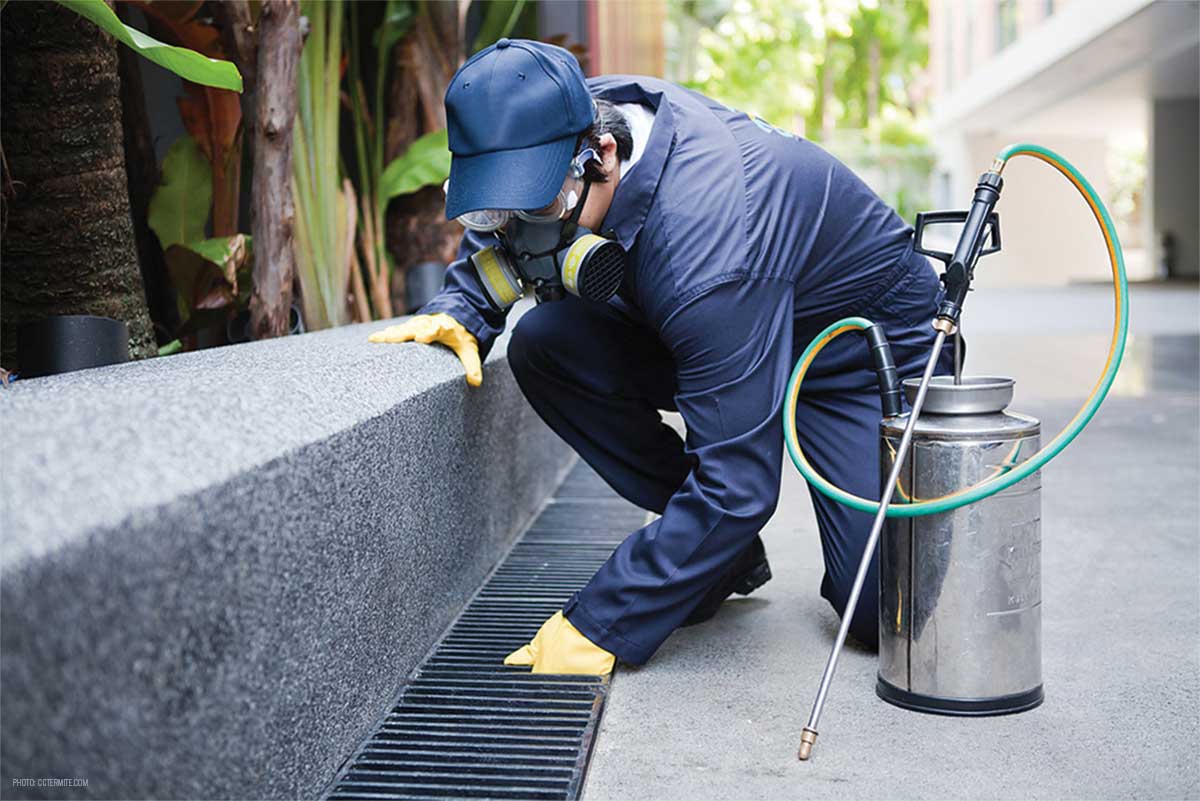Comprehensive Pest Control Services: Keep Your Building Pest-Free!
Comprehensive Pest Control Services: Keep Your Building Pest-Free!
Blog Article
Professional Pest Control Techniques for Long-Term Results
Professional pest control techniques encapsulate a thorough technique that starts with a detailed examination and assessment, followed by accurate bug recognition to recognize their behavior patterns. The application of Integrated Bug Administration (IPM) concepts, paired with eco-conscious therapies, creates the cornerstone of sustainable pest obliteration.
Evaluation and Assessment
Upon entering a residential or commercial property for insect control services, the preliminary step is a thorough evaluation and assessment to identify the extent of the infestation and determine the most effective treatment plan. Expert insect control service technicians are trained to carefully take a look at the facilities, seeking signs of bug task such as droppings, nibble marks, nests, or any type of structural damage. They will certainly additionally examine the problems that might be bring in bugs, such as food sources, water leaks, or entry points.

Bug Recognition and Actions

In addition, recognizing the habits of the identified pest is crucial to applying effective control procedures. Recognizing where bugs nest, what they feed on, and their activity patterns can help pest control professionals devise approaches to remove them effectively. Some bugs may be nighttime, while others are extra energetic during the day. This understanding enables the application of therapies at optimum times for optimum effectiveness.
Integrated Insect Monitoring (IPM)
Integrated Insect Management (IPM) methods combine multiple strategies to regulate and protect against parasite invasions in a sustainable and environmentally pleasant fashion. bed bug dog. By incorporating approaches such as organic control, environment adjustment, alteration of social techniques, and making use of imp source immune ranges, IPM aims to decrease using chemical pesticides
One of the key concepts of IPM is the emphasis on avoidance. This aggressive method entails monitoring parasite populations consistently to discover any kind of potential problems prior to they escalate. By recognizing insect troubles at an early stage, pest control procedures can be carried out promptly and properly.
Additionally, IPM promotes making use of safe parasite control approaches whenever feasible. This can include employing natural predators of the insects, presenting helpful pests, or making use of scents to disrupt mating patterns. By minimizing dependence on chemical pesticides, IPM not just secures the setting find here yet also helps preserve a balance in the environment.
Environmentally-Friendly Treatments
Executing eco-conscious techniques in bug control procedures can efficiently address problems while prioritizing environmental sustainability. Environmentally-friendly therapies concentrate on lessening the effect of insect control approaches on communities, non-target organisms, and human wellness. These approaches often involve making use of all-natural killers, such as ladybugs or nematodes, to regulate pest populaces, lowering the demand for chemical treatments. Furthermore, techniques like environment adjustment, such as readjusting wetness levels or getting rid of food resources, can aid deter pests without using harmful materials.
An additional secret aspect of environmentally-friendly therapies is making use of natural and biodegradable products that break down promptly without leaving dangerous residues in the setting. Herb pesticides obtained from plants like chrysanthemums or neem offer efficient parasite control while positioning marginal danger to non-target varieties. Additionally, using techniques like warmth treatments or scent traps can target specific bugs with accuracy, decreasing the total environmental effect of parasite control why not check here methods.
Continuous Tracking and Upkeep
Constant monitoring and upkeep are crucial components of reliable pest control management. Continuous monitoring plays a crucial role in guaranteeing that bug infestations are spotted very early and dealt with quickly. Routine assessments by qualified specialists are required to determine any signs of pest activity, evaluate the performance of previous therapies, and make adjustments to the pest control strategy as needed. By monitoring parasite populaces gradually, parasite control specialists can track fads, anticipate possible concerns, and execute preventative procedures to reduce the danger of future infestations.
Along with tracking, upkeep practices are essential for long-lasting parasite control success. This includes applying correct sanitation procedures to remove potential food and water sources for bugs, sealing access points to avoid bugs from getting in the premises, and resolving any kind of structural problems that could assist in pest invasions (exterminator near me). By integrating continuous tracking and upkeep right into an incorporated pest monitoring strategy, businesses can guarantee a pest-free atmosphere and protect their property against costly damage and health threats
Conclusion
In conclusion, utilizing professional pest control strategies such as thorough evaluation and assessment, accurate pest identification and understanding of their habits, integrated insect administration techniques, environmentally-friendly treatments, and ongoing monitoring and upkeep are important for achieving long-lasting lead to insect control. By implementing these methods, people can properly take care of parasite problems and preserve a pest-free atmosphere in a lasting fashion.
Report this page